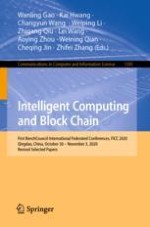2021 | Buch
Intelligent Computing and Block Chain
First BenchCouncil International Federated Conferences, FICC 2020, Qingdao, China, October 30 – November 3, 2020, Revised Selected Papers
herausgegeben von: Dr. Wanling Gao, Dr. Kai Hwang, Prof. Changyun Wang , Prof. Weiping Li, Zhigang Qiu, Lei Wang, Prof. Aoying Zhou, Weining Qian, Cheqing Jin, Zhifei Zhang
Verlag: Springer Singapore
Buchreihe : Communications in Computer and Information Science
